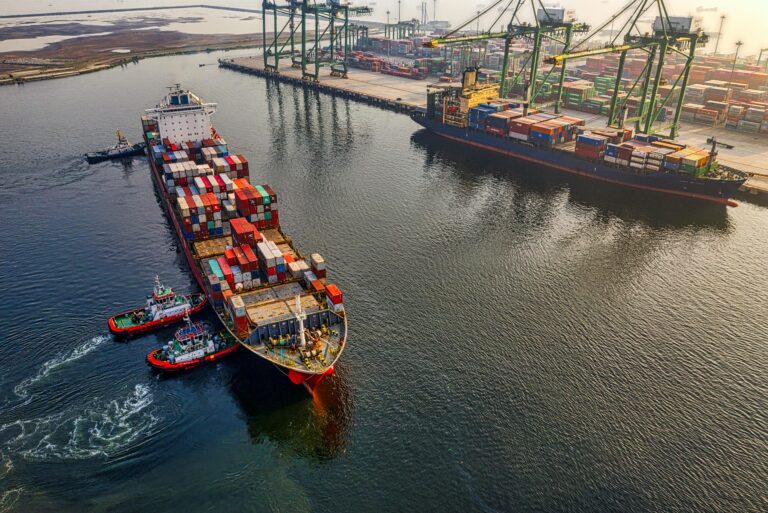Retailers and brands that want to launch a cross-border ecommerce effort can go it alone – but risk the process being much more timely and costly than they might realize.
Brands selling into international markets will have to implement many components to provide a successful experience to their shopper – from calculating duties and taxes for each region, to logistics, technology, providing payment methods and multiple currencies and much more. Launching a cross-border ecommerce effort is a complex undertaking and one that if provided at less than the highest capability will decrease brand loyalty and conversions.
While some brands are able to do all these tasks in-house, there are many reasons to turn to a global solutions provider. Here are 10 questions to think about before you begin:
1. How fast do you want to go?
When launching cross-border ecommerce, the process can take up to a year to complete from scratch. Factor in entering multiple markets either at once or staggered and this can be a very lengthy process. An established and reputable solutions provider should already have experience in these markets and the brand will be able to benefit from this knowledge and experience.
ESW helped major international clothing and apparel brands enter up to 30 markets in one year simultaneously.
2. Are your tech resources available for this?
There could be up to 70+ vendors from logistics to payments for a brand to integrate with depending on where and how many markets the brand wants to sell into. Using a solutions provider means all that is handled by the provider who will have already worked out the best vendors to use in each area for each market.
3. Have you considered all the payment forms you’ll need?
You probably already know that payments is a particularly difficult area to navigate in one market let alone multiple. From needing to work with local acquiring banks, understanding local payment methods and which payment methods to offer in each market, brands will face a multitude of decisions and requirements.
There will be no need to do an unique integration with each individual payment provider, wallet, or bank. The solutions provider will also know which methods to offer such as direct debit, buy now pay later (such as Klarna), buy online pick up in store (BOPIS) or Cash On Delivery in each market.
4. Are you thinking about fraud and chargeback risk mitigation in each country?
Fraud – whether through using stolen credit cards or returning used goods to a brand – is a major concern in ecommerce and one to which brands can be left open. Chargebacks are the reversal of a credit card payment by a bank or a cardholder through the bank. These can cost the merchant a lot of money and can attract fines from the schemes if chargeback levels are not kept within outlined boundaries.
A global ecommerce solution such as ESW takes on all risk for fraud and chargebacks to protect the brand.
5. How many unique storefronts will you need to create and keep updated, and how many country/region specific inventory pools will you need to manage?
For each new market that a brand sells into, it will need to create unique storefronts requiring unique country-specific inventory, as well as localised platform updates for each storefront. Managing these areas incurs significant costs in both money and manpower – undoubtedly necessitating new hires and the construction of experienced teams in each of these domains.
6. Are you ready to create logistics, delivery and returns networks in each country?
A solutions provider will have their own logistics, delivery and returns networks, and hubs established globally which means that brands will have access to access to a global returns network and omnichannel capabilities. This enables the brand to provide a better shopper experience as brands can examine returns at the hub and not when they arrive back at the original destination, facilitating refunds more quickly.
7. What will it take to make every step in the process feel local?
Different markets have differently formatted or named address fields eg Zip code in the US, postal code in the UK, and not having these correctly labelled – and in the right language for the market – can cause real difficulty to shoppers, leading to a poor experience or even non-conversion.
8. Are you ready to take on every duty and tax calculation?
More than half (51%) of cross-border brands consider duty and tax calculations to be the most difficult part of navigating an international ecommerce business. Calculating them depends on many factors including but not limited to knowing the HS Code for each product, the specific trade agreements between import and export nations, and any country-specific requirements. For example, Russia requires ID upon delivery of goods.
9. Do you really want to deal with all those currencies?
Providing local currencies is an important factor in increasing conversions and the more markets the brand sells into, the more currencies it will have to manage. ESW manages 100+ currencies for multiple clients and markets
10. Is your customer service team ready for multi-lingual support?
Navigating multiple markets with different languages requires a customer service team that is able to answer questions in the language of the market. Many markets are used to conducting business in English, not their native language. However, not all are and knowing when to provide specific language to a market is key to providing an excellent shopper experience.
Conclusion
There’s a lot to consider when thinking about expanding your business to include a cross-border ecommerce effort. That’s why a global solutions provider can bring to a brand selling new markets in order to expedite speed to market, manage multiple currencies and payment methods, facilitate accurate duties and tax calculations, and maintain all the other moving parts intrinsic to operating internationally.





